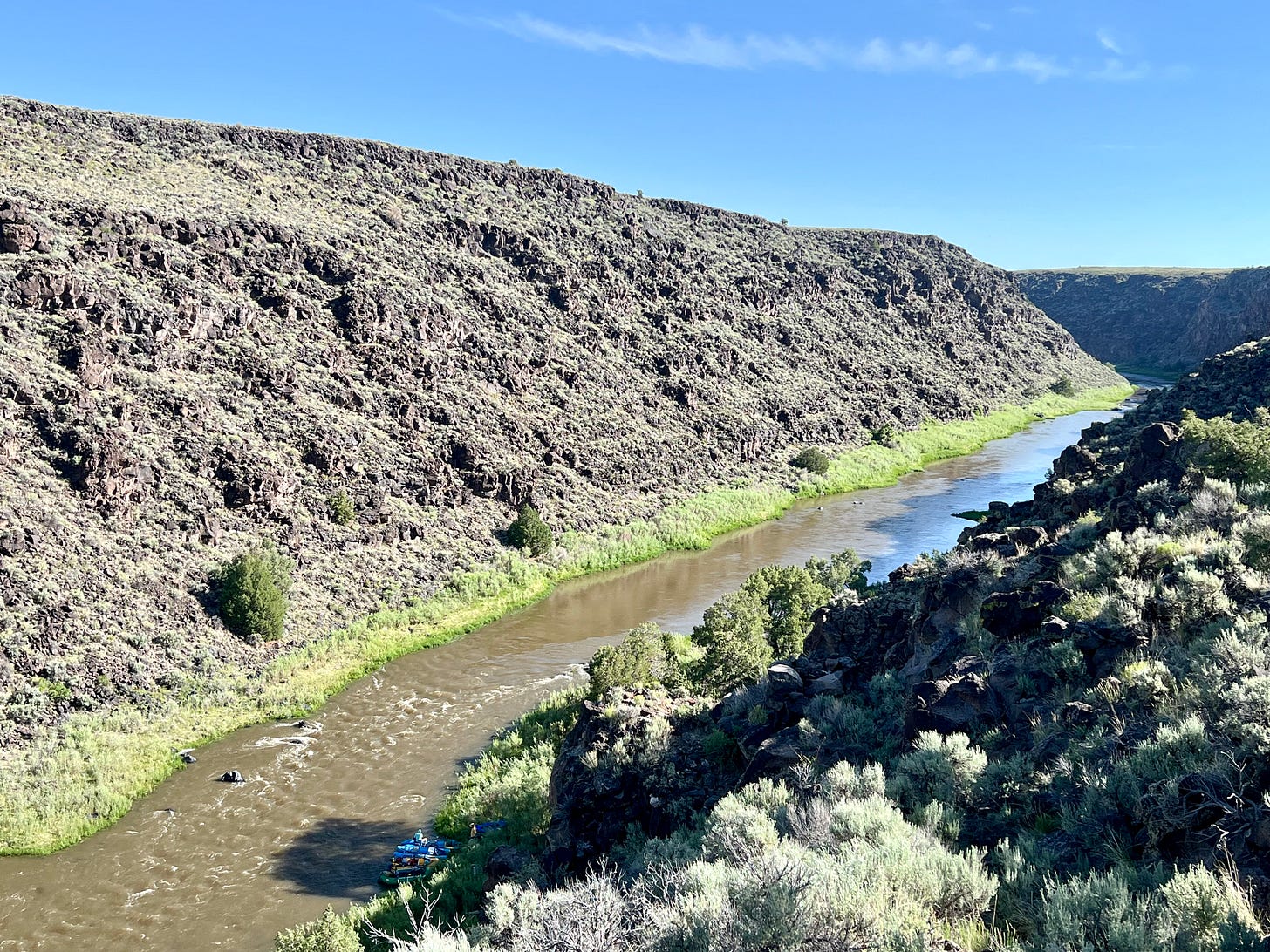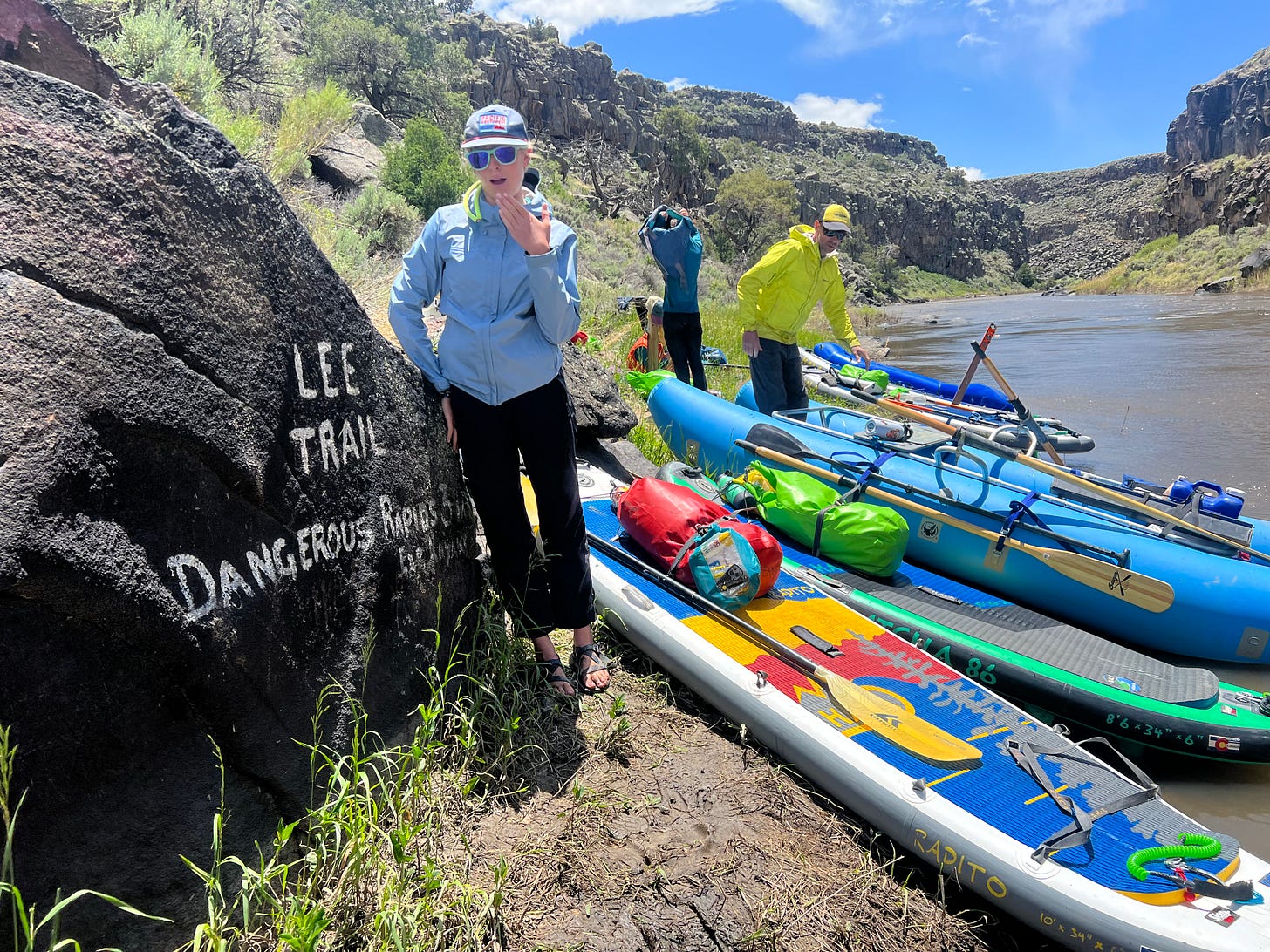Last weekend we went on a river trip. After a busy couple months traveling on book tour, keeping up with school and sports, and trying to train for a 100-mile mountain bike race, I was weary from the output, a tire worn down on its treads. I didn’t feel like riding my bike or running or writing this Substack. I just wanted to sleep in, do nothing, hang out.
In Portland, I’d gone to Powell’s, the biggest bookstore in the country. I scanned the display tables for Brief Flashings in the Phenomenal World and, with a sinking heart, approached the info desk. This is the saddest, loneliest part of book tour, the part no one talks about, but you have to do it. My friend, the author Caroline Paul, told me this. She said, “This is your practice. You have to go into every bookstore you see—EV-ERY store,” she emphasized, “and ask for your book by name. You will want to die of humiliation, but you have to do it.”
This man was kind, though, and tapped the title and some numbers into his computer. Tap, tap, tap. He wrinkled his brow. Hmm, he murmured with a quizzical expression like a doctor reading an unfortunate test result. I wanted to fall through the floor. Tap, tap. A thousand years dragged by until finally he lifted his eyes and proclaimed jubilantly, “We have one copy!” He scribbled copiously on a pad, as though copying the Dewey Decimal number out of a card catalog, and handed it to me. “Go upstairs and ask the info desk there to help you find it. When you do, you can autograph it for us.”
I crawled upstairs. The man at the second info desk had soft, understanding eyes and he tapped what seemed like a hundred more numbers into his computer, trying to locate my book. “It’s in Zen!” He said at last, beckoning for me to follow him. We were in the bowels of the bookstore, rows and rows of shelves crammed with wonderful books. There it was, like a lonely little waif, in the far back corner. I blacked out what happened next, except that I must have signed it and debased myself further by asking the clerk to place it in a more visible location—a shelf only slightly closer to the front—and then I crawled out of the shop.
When I got back to Santa Fe, I knew what I needed. Wilderness. The river. I needed to go far away from people asking about my book and how is it going! I needed to go to a quiet, peaceful place where I could think about the new book inside of me that is trying to come out and the book that I just made that keeps teaching me what I still need to learn. “You’re practicing your book,” my therapist M said last week, and I knew he was right, and that it is a wonderful thing to have a book like this, even on those days when it feels hard.
This section of the Rio Grande is wilder and more remote than others we run. It starts just north of the Colorado line and ends 25 miles downstream at a trail that’s easy to miss. There you have to lug all your boats and gear up 1/4 mile and 250 vertical feet over lumpy boulders to the top of the rim. This detail keeps the crowds scarce and the owls and bighorn sheep abundant. Miss the takeout and you’ll find yourself flung downstream into the Razorblades, a terrifyingly named section of Class V rapids which the guidebook describes as “almost certain death.”
No matter how many times we’ve run this stretch, we always worry: Where is the trail? How much farther downstream? Will we recognize it when we come upon it? Is this it? Is this? The first time we paddled it, just the two of us, Steve and I pulled our kayaks ashore and clamored up to the rim to look for telltale landmarks indicating it was close. We saw none. On another trip, a friend’s father was so worried he’d missed the takeout that he stood on the rim plaintively shouting his son’s name over and over into the wind and the whoosh of the river, 200 feet below.
This is the beauty of rivers. You can only see the bend you’re on. You can’t see two bends ahead, or ten. You can’t see where the current curves left or right, or meets a trail climbing out. You can’t see the razor blades of almost certain death downstream. You have to just be where you are and trust that you will get where you need to go. You have to practice not knowing.
In Zen, not knowing, or don’t-know mind, is considered a state of higher consciousness. “Not knowing is most intimate,” goes the famous Zen koan. When we practice accepting uncertainty and impermanence, we’re free to be alive in this moment right now, on this bend. Not-knowing can be uncomfortable and scary, but it’s also liberating. When I broke my leg on the Middle Fork of the Salmon River, I couldn’t think about the 97 rapids awaiting us downstream, or else I’d fall apart with worry. I could only take the river one rapid at a time. There was solace in this. I had to be on the bend we were on.
It’s an apt metaphor for life off the river, too. There are always rapids downstream, always rocks lurking to flip your boat, always bookstores where the man directs you to the farthest, loneliest corner, and always the question, how is it going! And the truth is, who knows, really? About anything. True wisdom isn’t having all the answers. It’s being OK not knowing.
In the end, we didn’t miss the trail. No one we know has. The takeout looked different at lower water than it had a year ago, but we didn’t sail downstream into the Razorblades. We hauled all our gear up the steep, uneven trail, making four trips each, arms laden with awkward loads, and when we got to the top, we stood for a long time, surveying the river with all its twists, upstream and down, the mystery, if only for a moment, solved.
wishing you brief flashings in whatever bend you’re on,
katie










yes, you are so right! I believe it will find the readers it's meant to, wherever it is. the ego gets in the way sometimes, though, and it's so good to be reminded of this. thank you!!!
Love the writing -- and the thinking and the living that's behind it.